TAG: GS 3: ECOLOGY AND ENVIRONMENT
THE CONTEXT: A recent study has brought to light the significant impact climate change will have on the habitats of key tree species in India’s tropical dry deciduous forests.
EXPLANATION:
- These species, essential for livelihoods and medicinal use, will experience varied responses to the changing climate.
Research Parameters
- The study, titled “How can dry tropical forests respond to climate change? Predictions for key Non-Timber Forest Product species show different trends in India,” published in the journal Springer.
- It assesses the climate suitability of various species under different climate scenarios.
- It examines two Representative Concentration Pathways (RCP):
- RCP 2.6: Assumes carbon emissions will begin declining by 2020.
- RCP 8.5: Predicts a temperature increase of 3.3 to 5.7 degrees Celsius if current trends continue.
Key Findings
- The study reveals a divergent impact on several tree species:
- Bael (Aegle marmelos) and Bahera (Terminalia bellirica): Expected to thrive.
- Chironji (Buchanania lanzan), Mahua (Madhuca longifolia), and Amla (Phyllanthus emblica): Expected to decline.
- Bael and Bahera
- Bael (Aegle marmelos):
- Climate Resilience: Bael shows resilience to future climate changes with minimal impacts.
- Habitat Shifts by 2070 (RCP 8.5):
- Highly suitable habitats will shift to the south Deccan plateau, eastern plateau, east coast, upper and lower Gangetic plains, and Punjab plains.
- However, bael will retreat from current habitats in the Siwalik hills, Western Ghats of Kerala, and northeastern India due to increased monsoon precipitation and higher altitudes creating favorable conditions.
- Bael (Aegle marmelos):
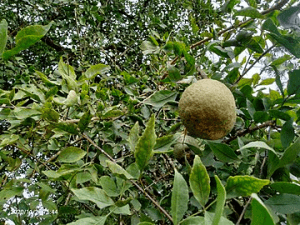
- Bahera (Terminalia bellirica):
- Climate Resilience: Bahera is anticipated to thrive, with an increase in climate suitability in the Western Ghats, Central Highlands, south Deccan plateau, eastern plateau, and east coast.
- Current Habitat: Found in the Western Ghats, Central Highlands, and Siwalik hills, with moderate presence in the Upper Gangetic plains, Central Highlands, eastern plateau, and Chhota Nagpur plateau.
- Climate Suitability: Shows low suitability in central and southern states like Karnataka, Telangana, Kerala, Andhra Pradesh, Tamil Nadu, Maharashtra, Bihar, West Bengal, and northeastern India.
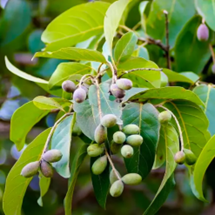
- Both bael and bahera are drought-tolerant and can thrive in poor or dry soils.
- Chironji, Mahua, and Amla
- Chironji (Buchanania lanzan):
- Impact of Climate Change: Expected to see a decline in suitable habitats due to sensitivity to high temperatures and rainfall variations.
- Current Habitat: Located in the Western Ghats, Central Highlands, and Siwalik hills.
- Chironji (Buchanania lanzan):
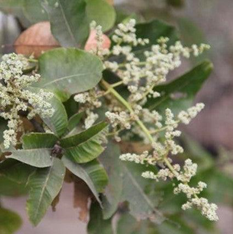
- Mahua (Madhuca longifolia):
- Impact of Climate Change: Severe impact anticipated, with a significant reduction in suitable habitats by 2100 due to increased intensity and frequency of rains.
- Current Habitat: Concentrated in the Western Ghats, Central Highlands, and south Deccan Peninsula.
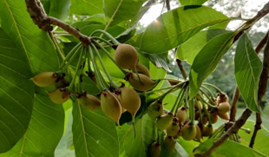
- Amla (Phyllanthus emblica):
- Impact of Climate Change: Predicted decline in suitable habitats due to excessive heat and changes in annual rainfall.
- Current Habitat: Primarily found in the Siwalik hills, Western Ghats, Assam hills, and Brahmaputra valley.
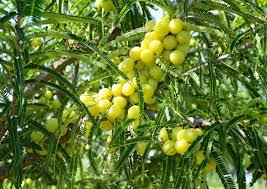
- The model predictions were validated by the presence of fossil pollen records of all target species in the specified habitats.
- These records indicate that the target species have been present for approximately 6000 years, suggesting a strong historical distribution during warm, humid climates in India.
- The study demonstrates a strong agreement between paleo proxy data and past projections of the target species made using Species Distribution Models.
- This combined technique is effective in validating predictive models.
Conservation Implications
- In addition to habitat disruption caused by climate change, other significant threats to global biodiversity include invasive species, overexploitation, and pollution.
- The findings of this study underscore the need for comprehensive conservation strategies.
- The study’s authors urge the government to implement policies involving native peoples to protect major Non-Timber Forest Product (NTFP) species.
- They emphasize the need for more research to develop sustainable management and conservation solutions for tropical and sub-tropical forest ecosystems.
- Further studies are necessary to understand how Indian forests will react to upcoming changes in climatic regimes.
- Continued research can guide conservation and restoration plans to mitigate the impacts of climate change on NTFP species.

